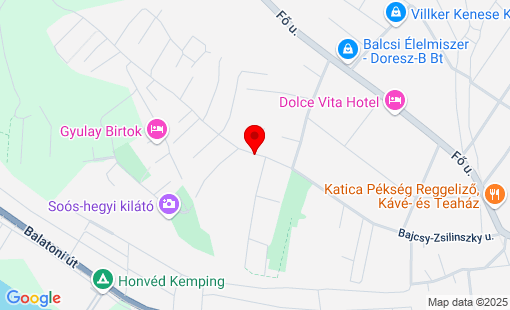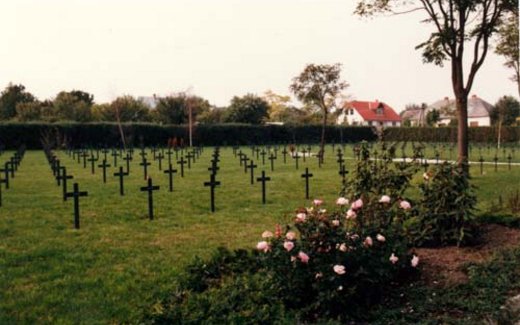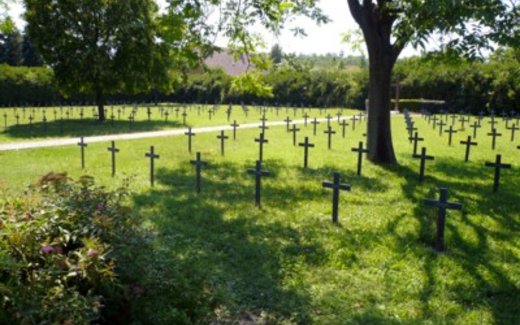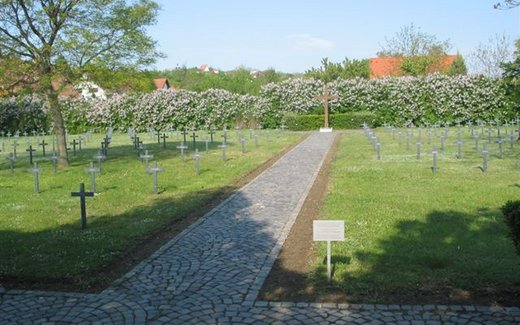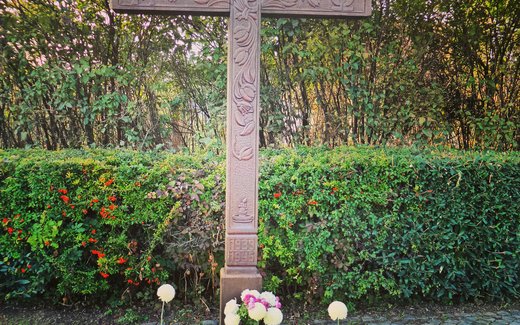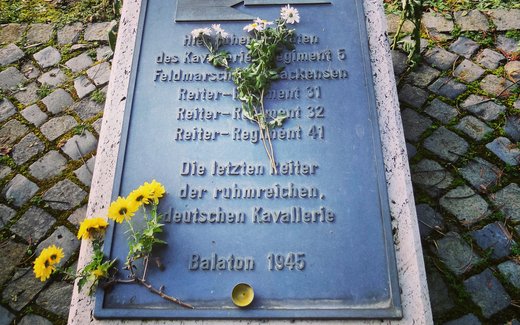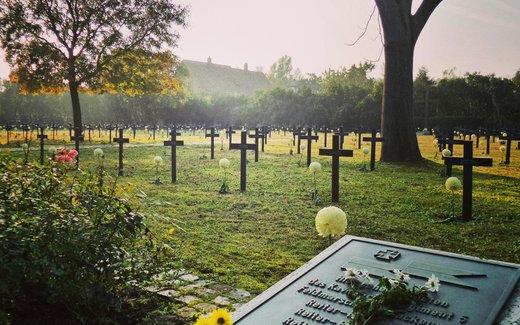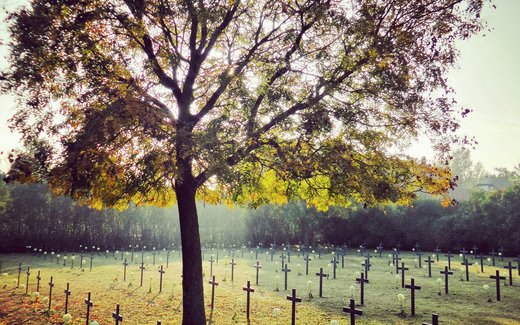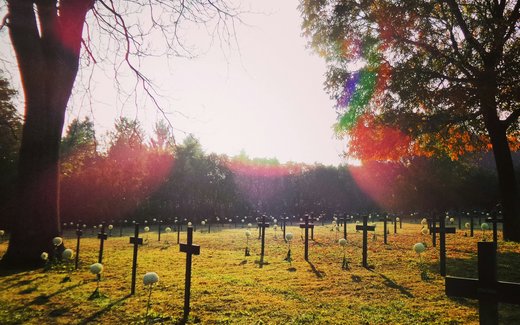The war cemetery in Balatonkenese, a small town on Lake Balaton, is part of the municipal cemetery. German war dead of the Second World War are buried there.
Burial
In March 1945, the Wehrmacht launched three large-scale offensive operations in the region to stop the advance of the Soviet army towards Vienna. However, the "Lake Balaton Offensive" failed and ended on March 16, 1945. German soldiers found their final resting place in the grounds of the "Reformed Cemetery" in Balatonkenese. 358 of them are known by name.
In total, around 54,000 German soldiers lost their lives in Hungary during the Second World War. 35.000 of them are known by name. Two thirds of all German war dead are buried in graves in around 120 locations.
History
In the post-war years, the original condition of the German cemetery in Balatonkenese was largely preserved - mainly because a priest looked after it and the Volksbund Deutsche Kriegsgräberfürsorge e. V. (German War Graves Commission) provided financial support.
In contrast to other Eastern European countries, Hungary had a positive attitude towards the German War Graves Commission long before 1989. The first negotiations took place as early as 1963 and Hungary was the only Eastern European country prepared to exchange war grave documents with the Volksbund. The planning of military cemeteries began in 1979 and the first sites were built in 1984.
At the beginning of the 1980s, the poor condition of the wooden gravestones at Lake Balaton led the Volksbund to make proposals for the redesign of the site. The plans were approved in 1985. From spring 1987, the cemetery was redesigned and replanted, and the graves were fitted with metal crosses. The work ended with the inauguration on November 1, 1987.
On the basis of the German-Hungarian War Graves Agreement, which came into force on December 23, 1994, the Volksbund maintains 15 military cemeteries in Hungary, including six collective cemeteries. The largest military cemetery was established on the outskirts of Budapest, in Budaörs. The site, where German and Hungarian war dead rest, has a peace park attached to it.
